A Sales Agreement is a vital legal document that outlines the terms and conditions of a transaction between a buyer and a seller. It defines the rights, obligations, and…
continue reading
10+ Sample Car Agreement
-
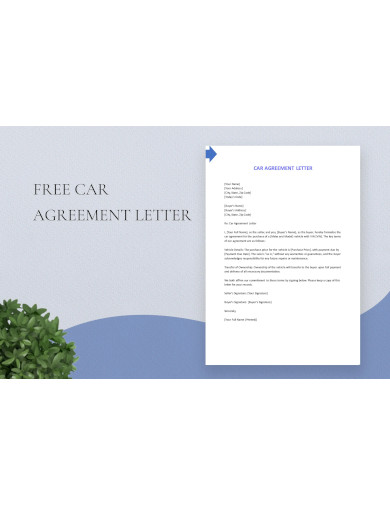
Free Car Agreement Letter
download now -
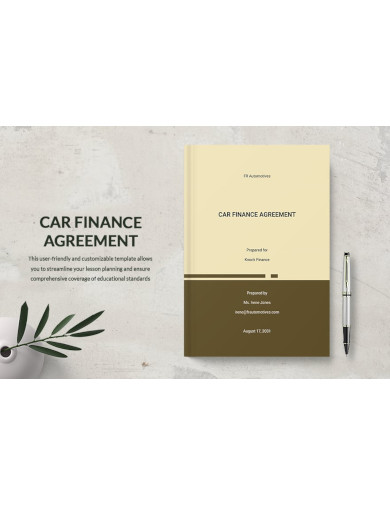
Car Finance Agreement Template
download now -
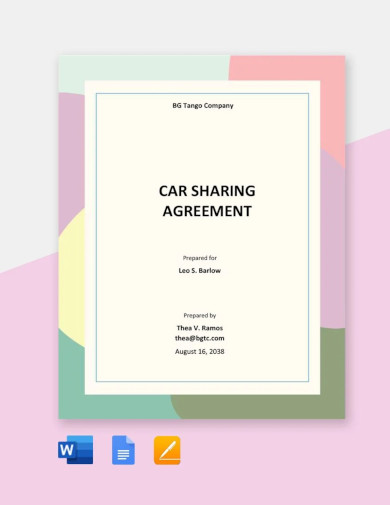
Car Sharing Agreement Template
download now -
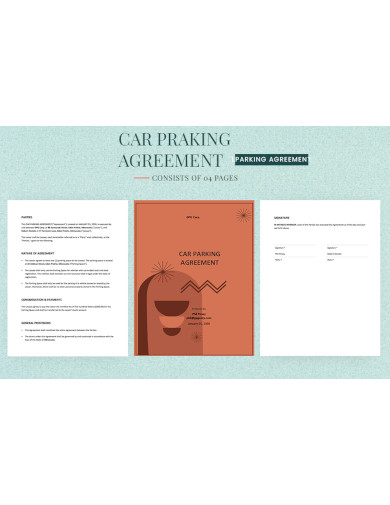
Car Parking Agreement Template
download now -
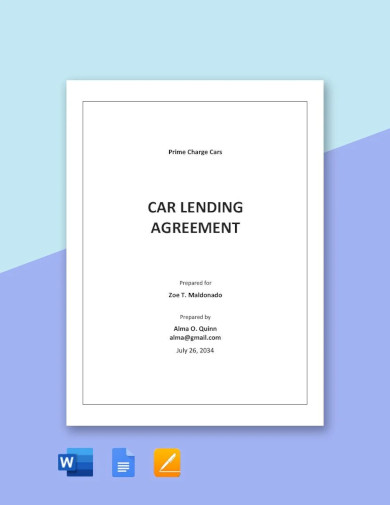
Car Lending Agreement Template
download now -
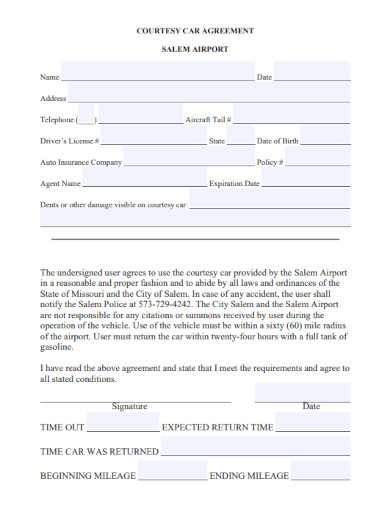
Courtesy Car Agreement Template
download now -
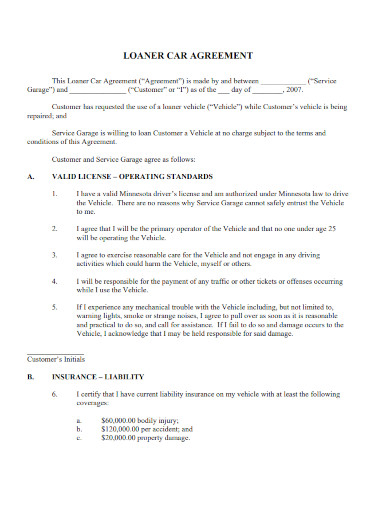
Loaner Car Agreement Template
download now -

Car rental Agreement Template
download now -
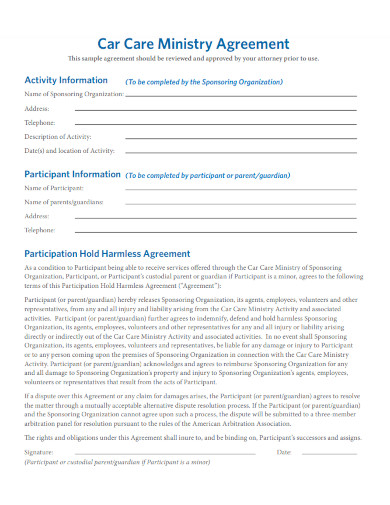
Car Care Ministry Agreement
download now
A car agreement, often referred to as a vehicle agreement, is a legally binding document that outlines the terms and conditions governing the use, ownership, and financial aspects of an automobile. This comprehensive agreement serves as a crucial tool in formalizing arrangements between parties involved in the transaction, typically the buyer and the seller.
What is Car Agreement?
Key Components of a Car Agreement:
1. Identification of Parties:
Clearly specify the details of both the buyer and the seller, including names, addresses, and contact information.
2. Vehicle Details:
Provide a detailed description of the vehicle, including make, model, year, color, vehicle identification number (VIN), and any specific features or accessories.
3. Terms of Sale:
Outline the agreed-upon terms of the sale, including the purchase price, payment method, and any applicable taxes or fees.
4. Payment Details:
Clearly define the payment schedule, whether it’s a lump sum or agreement of installment payments, and the due dates for each payment.
5. Delivery and Inspection:
Specify the date, time, and location for the delivery of the vehicle. Include provisions for a pre-purchase inspection if desired.
6. Warranties and Disclaimers:
Address any warranties provided by the seller and include disclaimers for any implied warranties. Clearly state the vehicle’s condition at the time of sale agreement.
7. Title Transfer:
Detail the process for transferring the title from the seller to the buyer, including any necessary documentation plan and responsibilities.
8. Obligations of Both Parties:
Clearly outline the responsibilities and obligations of both the buyer and the seller to avoid misunderstandings later on.
9. Default and Remedies:
Specify the consequences of default by either party and the remedies available to the non-defaulting party.
10. Signatures and Notarization:
Conclude the agreement with signatures from both parties and, if required, notarize the document to enhance its legal validity.
11. Importance of a Car Agreement:
A well-drafted car agreement is essential for protecting the interests of both parties involved in the transaction. It provides a clear framework agreement for the sale, reduces the risk of disputes, and ensures that all aspects of the transaction are legally sound.
Whether you’re buying or selling a vehicle, using a comprehensive and legally sound car agreement is crucial for a smooth and transparent transaction. Always seek legal advice to ensure that your agreement complies with applicable laws and regulations.
What is a Car Payment Agreement Between Two Parties?
When engaging in a private car sale, it’s crucial to have a detailed car payment to protect the interests of both the buyer and the seller. Here’s a comprehensive breakdown of the key elements to include:
1. Agreement Basics:
Clearly state that the document is a “Car Payment Agreement Between Two Parties.”
Include the names, addresses, and contact information of both the buyer and the seller.
Specify the date when the agreement is being established.
2. Vehicle Details:
Provide comprehensive information about the vehicle, including make, model, year, VIN, color, and any distinctive features.
Note the current mileage and condition of the car.
3. Payment Terms:
Clearly outline the total purchase price or agreed-upon payments.
Specify the method of payment (e.g., cash, check, electronic transfer) and the agreed-upon schedule.
4. Installment Details:
If the payment is in installments, outline the amounts, due dates, and any late fees.
Clarify if there’s any interest on unpaid balances.
5. Delivery of Vehicle:
Clearly state when the buyer will take possession of the vehicle.
Include a provision for a final inspection and acceptance of the car.
6. Seller’s Representations:
Address any guarantees or promises made by the seller regarding the condition of the vehicle.
Include information about any warranties, if applicable.
7. Transfer of Ownership:
Detail the process of transferring the title and registration to the buyer.
Clearly state that ownership will transfer only upon full payment.
8. Default and Remedies:
Specify the actions to be taken in case of default by either party.
Clearly outline the remedies available, such as repossession of the vehicle.
9. Governing Law:
Indicate the state laws that will govern the agreement.
10. Signatures:
Include spaces for the signatures of both parties.
If applicable, include spaces for witnesses or notaries.
11. Acknowledgment of Payment:
Include a section where the seller acknowledges each payment received.
12. Additional Terms and Conditions:
Add any specific terms or conditions relevant to your agreement.
What Should be Included in a Car Agreement?
A comprehensive car agreement should include details about the parties involved, vehicle information, payment terms, delivery and acceptance, warranties, responsibilities, default remedies, governing law, signatures, and any additional terms.
Can I Include a Warranty in a Private Car Sale Agreement?
Yes, sellers can include warranties in the agreement, specifying the duration and coverage. Buyers should carefully review these terms and ask for any guarantees in writing.
You May Also See SAMPLE Car Sale Agreements.
In conclusion, crafting a comprehensive car agreement involves meticulous attention to detail. By following this guide and incorporating essential tips, both buyers and sellers can ensure a smooth and transparent transaction. From detailing vehicle specifics to outlining payment terms, a well-written car agreement not only protects the interests of both parties but also serves as a legal record of the transaction. Drive confidently into your car deal armed with clarity and understanding.

